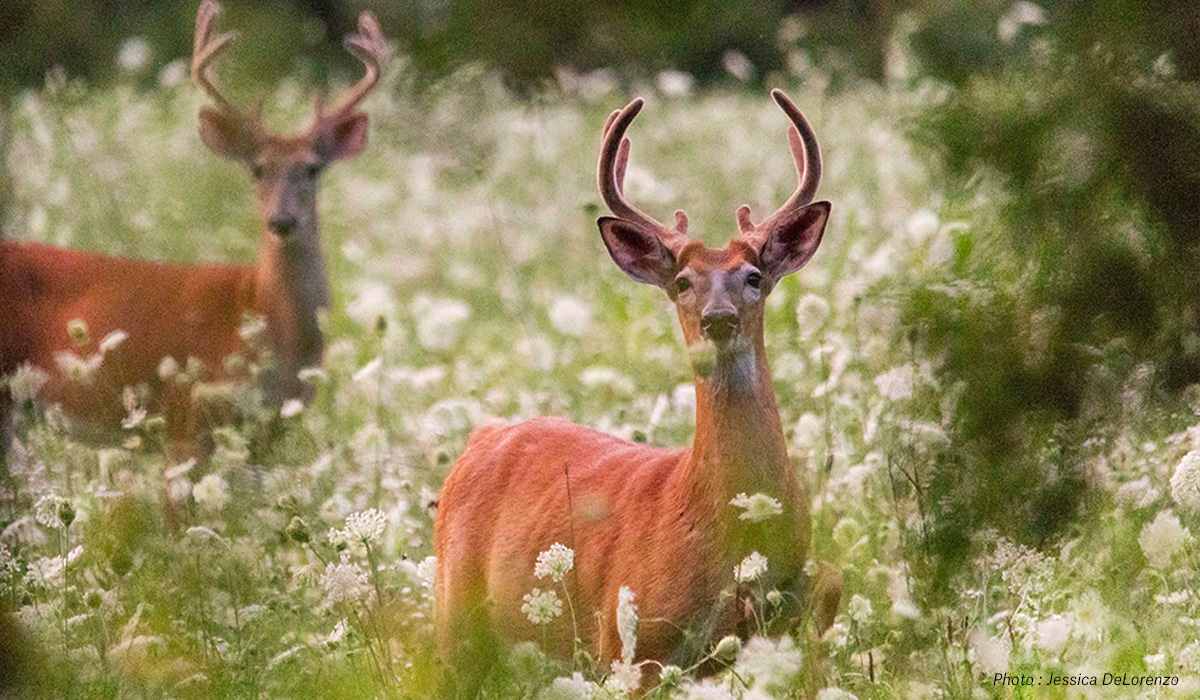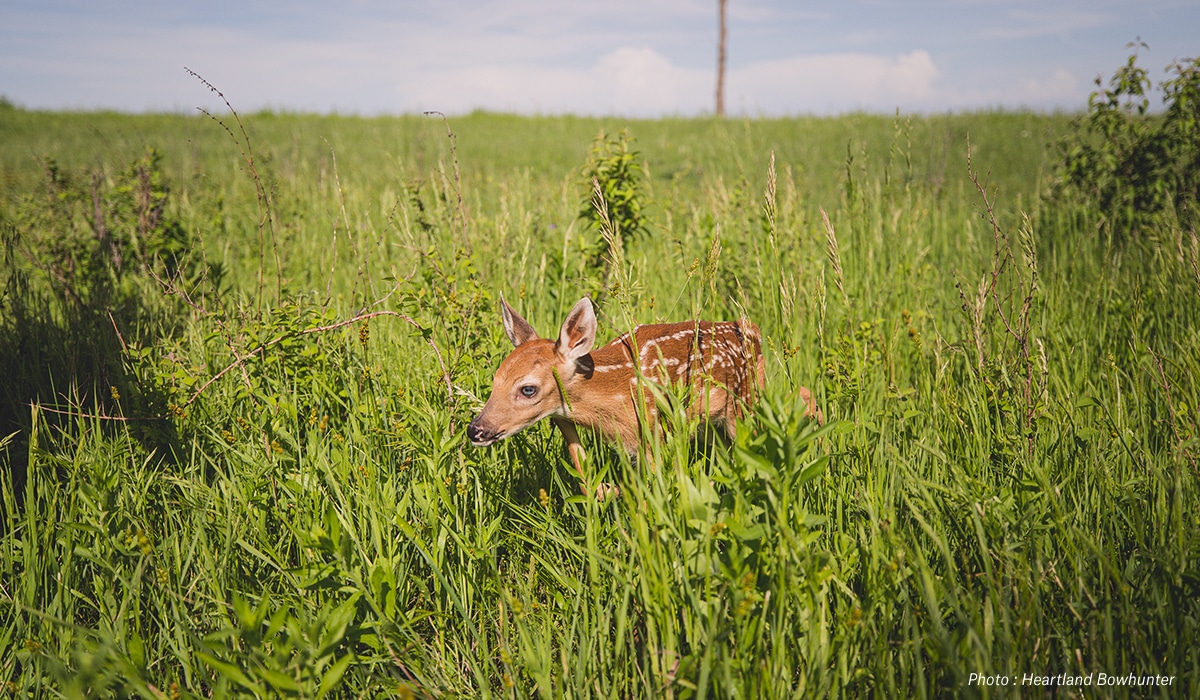A new monthly series dedicated to understanding deer biology and activity throughout the year. Month-by-month, we break down what whitetails are doing with support from leading deer biologists and experts. This information will help you better manage your land for deer and give you better tactics for hunting them.
It’s May and spring is in full bloom across most of North America. This month fawns will continue to drop (through August), so May is all about improving fawn recruitment, which is the number of fawns that survived long enough to be recruited into the fall population. For landowners and managers, the goal is to ensure your property has everything that will protect and nourish does and fawns—cover, food, and a water source.
Improving Fawn Recruitment
Without good fawn recruitment you’ll have fewer future bucks to hunt. Yearling does typically give birth to a single fawn. Mature, healthy does are more likely to give birth to twins. At birth, fawns weigh between six and 10 pounds, and though they can walk immediately they are often left alone while its mother goes off in search of food. To survive, fawns need good cover with few predators in the area, and does need highly nutritious foods to help with the production of milk.
“Cover is the key to fawn survival,” says the National Deer Association’s Chief Conservation Officer Kip Adams, “the more good cover you have from the ground up, to at least three to four feet, the better chance fawns have of hiding from predators. You want that cover spread across a property – the only time of the year that deer are territorial is when does are fawning.”
Fawns spend 90% of their time bedded in the first few weeks of their lives. In the southeast, coyotes, bobcats, black bears, and feral hogs can be responsible for high fawn mortality. Predation is natural, so the first step for keeping it in check is to provide better escape cover for fawns before moving to legally reduce predators. Understanding what measures should be taken if predation is happening regularly on your property should include consulting a deer biologist. In most cases, predator management is not a cost-effective technique to improve fawn recruitment, but stay tuned for July’s Whitetail Report, which will cover predation more closely.
For nutrition, however, whitetails have been found to have a diet that includes up to 600 different plants in their lifetime, but in May it’s all about the proteins, both for bucks growing antlers and lactating does. Does are in peak milk production between 10 and 37 days after the birth. Whitetail does need as much as 22% of their diet to be made of protein-rich plants during this time, which can come from native woody browse like elm, blackberry, or dogwood, and designated food plots of protein-rich clover (Red, Imperial Whitetail, or Ladino, for example).
Deer Feeding Times
With the abundance of new growth, food plots, and browse available in spring, whitetails can be more particular about the times they are feeding. Since by nature they move more during the early morning and late evening, they may not be moving much in the heat of the day to feed.
As Buckmasters biologist Bob Humphrey notes, “The best you can do with any deer species is look for general trends. Deer — whitetails, blacktails, and mulies — are crepuscular, meaning they’re most active around dawn and dusk. That’s when you should concentrate your efforts. Outside of the breeding season, about the only reason they’re on their feet is to feed and avoid predators.”

Deer Movement Times
Bucks will start to form bachelor groups, often mixing several different age classes. These bachelor groups move together throughout spring and summer to find lush greens and forbs in old fields or more open woodlots where the ground floor receives enough sunshine. Many naturally occurring food sources often have higher protein content than planted fields.
A couple of ways to dramatically influence deer movement as a hunter or land manager is to remove non-native grasses from old fields, which will release forb seeds trapped in the seedbed to flourish once exposed to sunlight. According to University of Tennessee professor and wildlife biologist Dr. Craig Harper, “This one step can create as much as 10 times more deer food per acre over allowing non-native grass to choke out your natural deer food.”
Another simple process is removing undesirable tree species from your woodlots in order to allow more sunlight to reach the ground level. This will allow more forbs and weeds to sprout and provide needed nutrition.
Bucks can and will travel greater distances in search of food in spring and summer months. They don’t help care for fawns, nor are they interested in does or defending their herd from encroaching bucks. This means you may be seeing bucks in May that won’t be back in the fall, or if you’re not seeing any bucks on your property this month it doesn’t mean they won’t be back in time for hunting season.

Hunting Forecast
Fawn births and fawn recruitment can tell you a lot about herd health and rut activity. Noting when fawns drop on your property can give you an estimate of when peak rut happens since fawns drop, on average, 200 days after conception. If a fawn drops on May 20, for instance, it was most likely conceived on or around November 1 the prior year.
Keeping detailed notes about fawn recruitment can help you estimate the size and overall health of the herd on your property. Through observational data, you should be tracking the fawns-to-does ratio (dividing the number of fawns observed by the number of does observed). High-quality habitats should have more than one fawn recruited per adult doe, but if nutritional conditions decline in an area, so will the fawn-to-doe ratio